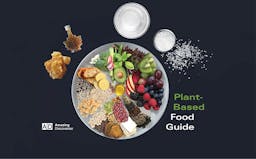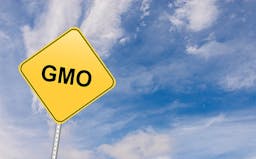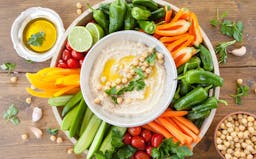Clean and Unclean in the Bible
Article by:
Amazing Discoveries™ |
16 min read
God’s Word is the Christian’s guide to life here and in preparation for life in the hereafter, but many Christians consider at least parts of the Bible to be outdated. In particular, few Christians today believe that the dietary laws regarding clean and unclean meats have any relevance to modern times. The dietary laws are seen as having been strictly ceremonial and therefore, are no longer necessary.
Is this true? Or have we overlooked important facts regarding the principles of clean and unclean?
The Bible tells us that all things were created by Jesus Christ (Colossians 1:16) and we know that He has a perfect plan for humans which He put in place at the very beginning of time. He created this planet to be inhabited and enjoyed by humankind. He wants us to be happy and healthy.
The Original Human Diet
In the beginning, God created everything perfect. There were no weeds and no blights:
And God said, Let the earth bring forth grass, the herb yielding seed, and the fruit tree yielding fruit after his kind, whose seed is in itself, upon the earth: and it was so. (Genesis 1:11 KJV)
And God said, Let us make man in our image, after our likeness: and let them have dominion over the fish of the sea, and over the fowl of the air, and over the cattle, and over all the earth, and over every creeping thing that creepeth upon the earth. (Genesis 1:26 KJV)
After God created the perfect world, He gave Adam and Eve instructions about their diet. “And God said, Behold, I have given you every herb bearing seed, which is upon the face of all the earth, and every tree, in the which is the fruit of a tree yielding seed; to you it shall be for meat" (Genesis 1:29). The term “herb-bearing seed” is translated as “seed-bearing plant” in other translations. The original diet given in Eden for humanity at Creation consisted of nuts, fruits, grains, legumes, and seeds.
Even today, everything our body requires is found in a grain kernel. It has the carbohydrate, the protein, and the essential lipids we need in all the correct proportions.
But the world has become contaminated with poisons and toxins. And modern food practices separate these good foods—and sell each portion at a much higher cost! Most bread these days lacks the basic natural ingredients. Much of the whole food that is still available is chemically treated. Despite all this, if we all ate more whole grains (unsprayed or organic), we would have far fewer diseases.
It is clear that our human digestive system is geared toward the diet God set out for us in Genesis 1 and our physiology attests to this fact. The length of the digestive tract is a strong indicator of what type of food is normally eaten. Herbivores, such as cattle, have a gut-length 20 times their body length, since it takes longer to digest the fiber content in their diet. The shortest tracts are found in meat-eaters. Our digestive tract is 12-14 times our shoulder-to-hip trunk length, the same as fruit-eating animals.
This shows that the human digestive tract was not originally intended to be for meat.
Vegetables Enter the Human Diet
After the Fall, humans were also permitted to eat vegetables. This was because God knew that man would now be assaulted by disease and weakness, and additional strength would be needed. In addition, the original foods would be harder to come by than they had been before. God knew that Satan would use diseases and weather extremes to damage and destroy crops. Satan's work has always been to destroy or deface God's creation whenever he can. When Adam and Eve disobeyed God, Satan stole their dominion of the planet, and the whole of creation has been groaning ever since. God told Adam that, as a result of his disobedience, the earth would be cursed—that it would produce thorns and thistles—and that he would "eat the herb of the field" (ie. vegetables) (Genesis 3:18 KJV).
Science1 has found that it isn’t good practice to eat vegetables with fruit at the same meal because vegetables take longer to digest than fruits, grains, and seeds. When vegetables are combined with fruit at the same meal, fermentation results which can be detrimental to the immune system.
Nevertheless, the original diet that God gave to humans consisted only of plants. God did not give meat as a food until the crisis of the Flood.
Meat Enters the Human Diet
Meat entered our diet after the Flood. Once the floodwaters had receded, the earth had little vegetation. Perhaps Noah had seeds with him and planted these, so he might have eaten garden greens such as kale and lettuce soon after the flood. However, there would have been no fruit or nuts for a number of years. This situation would have presented a food shortage emergency.
In addition, God knew that meat-eating would shorten the lifespan, which would slow the spread of sin and rebellion. Before the flood, people lived almost to 1000 years and wickedness spread rapidly. Shortening people’s lives effectively put the brakes on humanity’s rush toward the brink of ruin a second time.
For these reasons, God allowed meat eating. Following the flood, the Lord said, "Every moving thing that liveth shall be meat for you; even as the green herb have I given you all things." (Genesis 9:3). The KJV Bible uses the old word “meat” which means “food.” “Herbs” are translated as simply “plants” in newer translations. So in addition to plants, which had been their diet up until the flood, God allowed them to eat “moving things” or “animals.”
Before the animals had gone into the ark, however, God explicitly distinguished between clean and unclean animals in Genesis 7:2, where God instructed Noah to bring into the ark seven of each of the clean animals, but only two of each of the unclean. Thus, the concept of clean and unclean is not a concept that originated with the Jewish nation, but came from the time before the Flood.
Clean and Unclean: The Science of Leviticus 11
Apparently, even God’s people forgot the instructions He gave Noah distinguishing clean from unclean in the years after the Flood when Noah’s descendants spread out upon the earth. At the time of the Exodus, God first put all of the children of Israel on a 100% plant-based diet consisting of manna. Manna is described in the Bible as “bread from heaven” (Exodus 16:4). It was small, round, and white. It looked like coriander seed and tasted “like wafers made with honey.” (See Exodus 16: 14 and 31.)
The Israelites complained bitterly about this diet, and often craved meat, to their detriment.
Later, God reminded the Israelites of the clean and unclean rules by giving them a set of formal, written guidelines for what they should eat. Here is an overview of the clean and unclean animals that are discussed in the book of Leviticus.
Clean Animals
God specified that His people were to eat only clean animals, as follows:
Hooved Animals
And the Lord spake unto Moses and Aaron, saying unto them, Speak unto the children of Israel, saying, These are the beasts which ye shall eat among all the beasts that are on the earth. Whatsoever parteth the hoof and is clovenfooted, and cheweth the cud among the beasts, that shall ye eat. (Leviticus 11:1-3)
According to Leviticus 11, all clean animals are cud-chewers—cows, goats, deer, and other game. They all have a pre-stomach, or rumen, in which the food is pre-digested. The bacteria in the rumen are able to convert all the material into digestible matter. Only after this food has been thoroughly digested does it enter the real stomach.
Also, clean animals are all herbivores. They are, therefore, eaters of "primary" material, unlike unclean animals which are generally animals that eat other animals. Those that are unclean include carrion eaters and the waste-disposers of the world. The levels of accumulated toxins increase up the food chain, with apex predators having the highest levels because of biomagnification.
Fowl
Birds that have a crop are also clean, since their food is well digested and does not ferment. These include chickens, turkeys, pigeons, and doves.
The chicken is listed as clean since it originally ate only seeds.
Marine Animals
These shall ye eat of all that are in the waters: whatsoever hath fins and scales in the waters, in the seas, and in the rivers, them shall ye eat. (Leviticus 11:9)
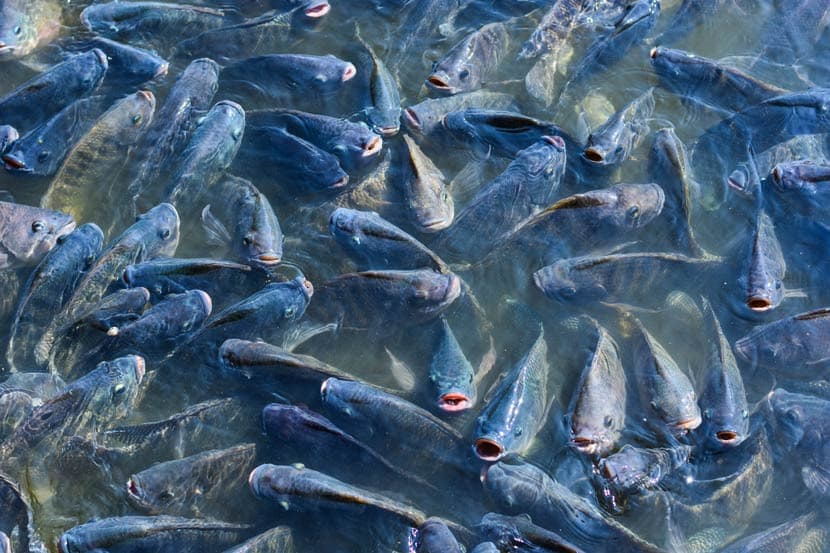
Only fish with fins and scales are edible. These fish are generally found in cold, deep, or fast-running waters. They also have an excellent detoxifying enzyme system. Clean fish include trout, salmon, pike, tilapia, perch, and many others. Examples of unclean fish include catfish, eel, shark, sturgeon, and all shellfish.
Insects
Leviticus 11:22 makes it clear that of all insects, only the locust and grasshopper are clean. Some confusion has resulted from translating the terms from the original. In this verse, the KJV lists “locust,” “bald locust,” “beetle,” and “grasshopper.” Strong’s Hebrew Dictionary defines the Hebrew word translated as “beetle” as “a kind of locust.” So, this verse lists only different types of grasshoppers, since locusts are swarming grasshoppers. Grasshoppers are strictly plant eaters and are therefore clean. Some translations include crickets in this verse, but since crickets are omnivores and eat other creatures, it’s unlikely that “cricket” is what was meant.
Unclean Animals
God also told the Israelites which animals they were not to eat. Without exception, all animals that consume “secondary material”—in other words, animals that eat animals—are unclean. These include the following:
Carnivorous Birds
All birds that eat other animals and do not have a crop are considered unclean. Unclean birds include the crane, ostrich, eagle, vulture, and crow, among others.
Camels
The camel has no split or cloven hoof, making it unclean. However, this animal has a similar digestive system to the clean animals; so what is the problem? The camel had to adapt to a desert environment in order to survive. It underwent a physiological adaptation where instead of sweating and losing its body water, the camel’s body temperature rises to higher levels than before. This, unfortunately, allows the level of toxins in its body to rise to very high levels as well. This coping mechanism makes the camel unfit for human consumption.
Coneys
The coney, (a kind of a rabbit) also known as the hyrax or dassie, is unclean. Though its diet is mostly herbivorous, it will also eat birds’ eggs, lizards, and insects. Young hyraxes are also coprophagous. A coprophage is an animal that eats its own excrement or feces or that of another animal. Coneys eat the feces of adult hyraxes.
Rabbits
Even though the rabbit is herbivorous, Leviticus 11:6 states that it is unclean. In order for the rabbit to obtain sufficient nutrients from the plants it eats, it has to ferment the material. Cattle and other ruminants have a pre-stomach where plant material is broken down in an alkaline environment through fermentation. Rabbits don’t have a pre-stomach. Instead, they have an enlarged cecum, a pouch between the small and large intestines. In rabbits, this is where fermentation takes place.
However, its cecum is sandwiched between its gut and rectum and most of the absorption of the nutrients takes place there. When the rabbit redigests this material, it becomes coprophagous. In other words, it eats its own excrement, which is high in the waste products of digestion. Consequently, the level of toxins in its tissues is far higher than in other herbivores. Bile salts, fatty acids, gasses, and ammonia levels in the meat are all at unacceptable levels for human consumption. All rodents, and even the horse, fall into the same category.
Swine
What do pigs eat? Pigs are omnivores and will eat plants or animals. They are not picky eaters and will eat almost anything, including animal waste. Traditionally, pigs on small family farms were fed “slop” or “swill” in troughs. Slop for pigs might contain kitchen scraps, soured milk, and old eggs, or whatever the farmer had on hand. Pigs are known to eat small creatures like mice and even manure. Today, commercially prepared feed for pigs can contain animal by-products from meat processing plants and poultry hatcheries.
A fact sheet at Pork Information Gateway, a national library of articles by pork scientists states that “feed costs comprise approximately 65-70% of the cost of pork production.”2 To reduce costs, “alternative feedstuffs” are recommended.
Government regulations approve the following types of “alternative feedstuffs” as ingredients which can be included in feed for pigs: “garbage collected from food production establishments like restaurants, school cafeterias, and food processing plants;”3 meat by-products such as animal fat, blood meal, and meat and bone meal; hydrolyzed hog hair; feather meal, poultry by-product meal; and egg by-products, including culled eggs and chicks from hatcheries.2
Sometimes, pigs are kept in batteries where only a few pigs get the food. The rest of the pigs get only the droppings, which are extremely toxic. Any tissue from these animals is very unclean indeed.
Pigs have very high histamine levels. On top of that, the connective tissue is very rich in sulfur, leading to increased blood acidity and osteoporosis in those who eat pork, because the body pulls calcium stored in the bones to reduce the acidity caused by the high level of sulfates. Research indicates that high sulfate levels, especially in meat-rich diets, are responsible for osteoporosis.
The pig is certainly responsible for much disease, including trichinosis, a prevalent disease caused by the trichinella worm. Many people are allergic to pork because of the high histamine levels, and pork also encourages the formation of excessive amounts of mucous in our bodies.
God warns us in Leviticus 11:26 to not even touch the carcass of a pig.
Fish
And all that have not fins and scales in the seas, and in the rivers, of all that move in the waters, and of any living thing which is in the waters, they shall be an abomination unto you. (Leviticus 11:10)
Those fish that do not have fins and scales are either scavengers or pure carnivores, and are unclean.
The common snook has scales, but as it is taken out of the water the scales fall off, so they cannot be classified as clean. Each snook is also home to thousands of bladder worms, which are full of urea. This urea is what gives the snook its distinctive tangy flavor that many people enjoy.
Mammals and Reptiles
According to Leviticus 11:27, "Whatsoever goes upon his paws," such as cats, dogs, rats, mice, and weasels, are unclean. All reptiles are also unclean.
Insects
Insects that do not fly, or are further down on the food chain than the locust or grasshopper, are not for eating. Unclean insects include beetles, mealworms, houseflies—in short, every insect that is not a grasshopper or locust.
While many would not intentionally eat insects, there is a growing industry producing insects for human consumption. Unclean insects like mealworms, caterpillars, and even houseflies are being incorporated into foods in the form of protein-rich flours.
In addition, the cochineal beetle, which produces the color carmine, is a common source of “natural color” in fruit juices, fruit cocktail, ice cream, soft drinks, chewing gum, and many other prepared foods. This insect is also unclean.
Modern Practices
For those who want to avoid unclean foods and follow God’s recommended diet, it’s getting harder to avoid what’s unclean, especially in processed foods. Foods you would not expect to be unclean, like fruit cocktail for example, may be unclean due to what’s added in processing. Always check the ingredients list.
In addition, clean animals are becoming unclean as well through modern feeding practices. The chicken is listed as clean since it originally ate only seeds but today, the average commercially reared chicken is fed on fishmeal or carcass meal (reject material from the slaughterhouse). Feeding practices have made them unclean and they can no longer be regarded as acceptable.
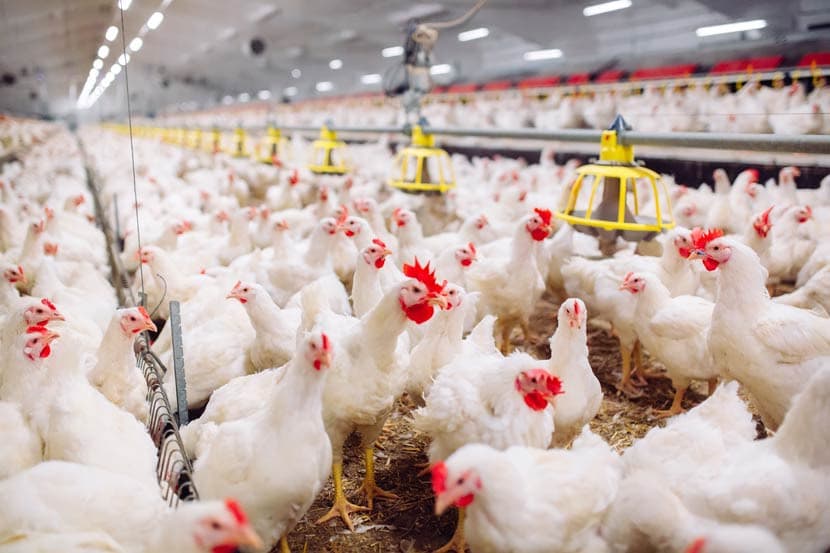
Because of the common practice of feeding manure and animal by-products in aquaculture, fish raised in fish farms, even if they have fins and scales, are now also unfit for human consumption, whether they are raised in ocean or freshwater pens. These must also be considered as unclean and not fit for human consumption.
Pigs, which were always unclean according to the Bible, are also fed animal by-products, making them even more unclean, if that were possible.
Leviticus 11 makes it clear that of all insects, only the locust and grasshopper are for eating. Nevertheless, as with other commercially raised meat animals, commercially raised edible insects that are fed cattle manure4 or other unacceptable feed should be considered unfit for human consumption.
Unclean = Unhealthy
God is concerned with the health of all His creatures—human and animal. The meat of unclean animals was never fit for human consumption because it was detrimental to our health. It is still the same today.
Read about what’s still Unclean in the New Testament.
Some ask, Can Christians Eat Pork? Find out!
Watch: Did Jesus Make all Meats Clean in Mark 7:19?
These statements have not been evaluated by the Food and Drug Administration or Health Canada. Our articles, videos and products are not intended to diagnose, treat, cure, or prevent any disease. If you are pregnant, nursing, taking medication, or have a medical condition, consult your physician before following any recommendations or using any product on our site. You assume sole responsibility for your personal health, and you must use your own discretion under doctor consultation to determine whether any product or recommendation on this site is suitable for your personal situation.


